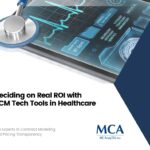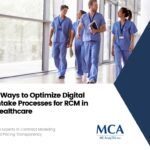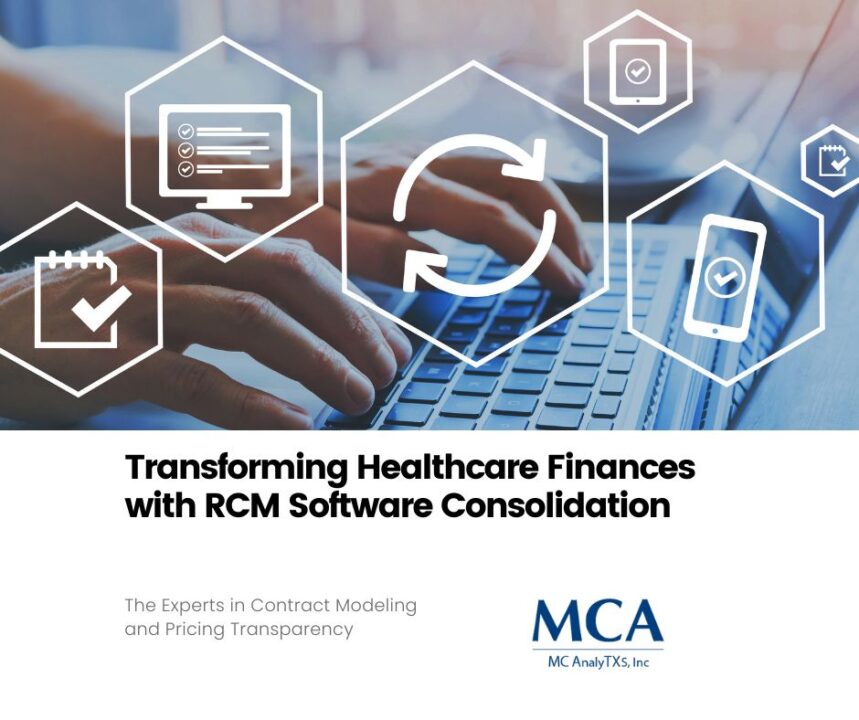
Deciding on Real ROI with RCM Tech Tools in Healthcare
March 22, 2024
6 Ways to Optimize Digital Intake Processes for RCM in Healthcare
March 27, 2024In the intricate web of healthcare financial management, the back-end revenue cycle often operates as the unseen engine driving revenue and financial health. Unlike the front-end processes that engage with patients directly—scheduling appointments, registration, and co-pay collection—the back-end of revenue cycle management (RCM) is where the intricacies of billing, claims processing, and collections occur. This blog post is designed to shine a light on the often-neglected back-end steps, providing revenue cycle managers and CFOs with crucial insights and actionable strategies to optimize within this realm.
Understanding the Back-End Revenue Cycle
The back-end revenue cycle involves post-service activities that ensure financial reimbursement for services provided. It begins with claims submission and ends when the healthcare provider has received full payment. The components of the cycle include charge capture, coding, billing, and collections. While this back office may not be as visible as the front-end of the revenue cycle, its impact on the overall clinical and financial outcomes is undeniable. Below, we reveal the mechanics of this revenue engine and the key best practices that drive it efficiently.
Key Best Practices for Optimization
- Data Accuracy and Integrity
An error in medical coding or patient billing can have serious consequences, from delayed payments to regulatory fines. Ensuring the accuracy and integrity of your data is the foundational step in optimizing the back-end revenue cycle. This involves rigorous training for billing and coding staff, regular audits, and the use of technology such as automated coding assistance to minimize human error.
- Timely Billing and Claims Submission
Time is money, especially in the realm of medical billing. Prompt submission of clean claims to payers can significantly accelerate the payment process. Develop and adhere to strict billing schedules, automate repetitive tasks where possible, and integrate front-end systems with back-end processes to expedite claims submission.
- Denials Management
Claim denials can be a significant drain on resources. A robust denials management system is essential to identify common denial reasons, track trends, and implement corrective actions. This may include staff re-education, process improvements, and technology solutions to enhance claim accuracy.
- Revenue Recovery Strategies
Even after initial claim submissions, there may be opportunities for additional revenue recovery. Implementing effective strategies, such as automated secondary claim submissions and pursuing underpayments, can result in capturing revenue that would otherwise be lost.
- Compliance and Regulatory Adherence
With healthcare regulations in constant flux, maintaining compliance is both a challenge and a necessity. Staying updated on regulatory changes, conducting regular compliance audits, and integrating compliance checks into your RCM workflows are vital to avoid penalties and further financial burdens.
Impact on Financial Health
Efficient back-end revenue cycle management directly impacts the financial health of healthcare organizations. By minimizing claim denials, reducing revenue cycle times, and optimizing collections, organizations can streamline financial operations and secure a healthier bottom line. Data accuracy and adherence to compliance not only bolster financial systems but also enhance operational credibility and patient trust.
Conclusion
For healthcare organizations, the back-end revenue cycle isn’t just a series of operational processes—it’s the linchpin of financial stability. By delineating the key best practices, we’ve empowered revenue cycle managers and CFOs with actionable steps to fortify this critical area of financial management. Implementing these practices, and investing in the necessary resources and technology, can deliver significant returns in terms of operational efficiency, regulatory compliance, and ultimately, the fiscal health of the organization. Through these efforts, organizations can ensure they are not just surviving but thriving in the challenging landscape of modern healthcare economics.





